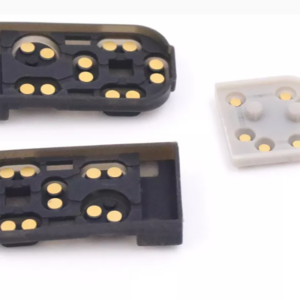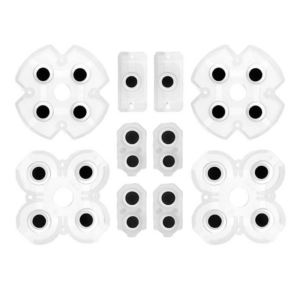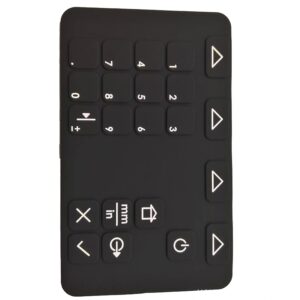Since the other day we introduced the design and finish of the keyboard, today let’s introduce the internal condition of the keyboard, today let’s analyze its internal structure, this is a topic about the “pills” where I will introduce what kind of pills there are. Finally, I’ll talk about the choice of finishes for your keyboard.
Silicone rubber keypads, renowned for their versatility, employ silicone rubber webbing surrounding each button. This webbing, crucial for decompression under pressure, is integral to the keypad’s functionality. Notably, silicone rubber keypads incorporate essential components called “pills,” which play a vital role in enabling input registration.
Description Of Pills
In the realm of silicone rubber keypads, pills are synonymous with conductive contacts, resembling the shape of medicinal pills. As silicone rubber lacks conductivity, these pills play a crucial role in facilitating the opening and closing of circuits within the keypad buttons. Acting as switch contacts, they enable the completion or interruption of circuits when a key is pressed or released, forming an integral part of the keypad’s functional mechanism.
Utilization of Pills in Silicone Rubber Keypads
Each button in a silicone rubber keypad is discreetly equipped with a concealed pill positioned beneath the buttons within the silicone rubber webbing. The silicone rubber webbing acts as a separator, ensuring that the buttons remain apart from the switch contacts on the underlying circuit during their default state. When a button is pressed, the deformation of the silicone rubber webbing facilitates contact between the pill and the switch contact, completing the circuit.
The Introduction of Gold and Carbon Pills
Silicone rubber keypads commonly utilize either gold or carbon pills to complete switch circuits. While both types can effectively fulfill this function, gold pills tend to outperform carbon pills. Gold, known for its excellent conductivity, is resistant to oxidation, corrosion, and various forms of damage. It is a superior conductor of both heat and electricity.Below this picture is related to gold pills, where we can quickly distinguish what makes them different.
 However, carbon pills remain a viable option and can successfully complete switch circuits like their gold counterparts. Some individuals may prefer carbon pills due to their cost-effectiveness compared to gold pills.And this second one is carbon pills, from the above picture and this one, we can clearly feel its difference in color, right?
However, carbon pills remain a viable option and can successfully complete switch circuits like their gold counterparts. Some individuals may prefer carbon pills due to their cost-effectiveness compared to gold pills.And this second one is carbon pills, from the above picture and this one, we can clearly feel its difference in color, right? Surface Finishing Choices for Plastic Keypads
Surface Finishing Choices for Plastic Keypads
Vacuum Metallization
Vacuum metallization (VM) is a surface finishing technique for plastic keypads. In this process, plastic keypads and a base material, often aluminum, are placed in a vacuum chamber. The negative pressure generated in the chamber causes the base material to cover and adhere to the surface of the plastic keypads.
Laser Etching
Laser etching stands out as a refined finish option for plastic keypads. Unlike processes that add material, laser etching selectively removes paint from the top layer using a high-powered laser. This precision results in a stylish appearance, enhancing the aesthetic appeal of the plastic keypads. It’s important to note that laser etching involves the removal, not addition, of material from the top layer.
 Powder Coating
Powder Coating
Powder coating is a favored finish for plastic keypads, involving the application of a fine layer of powder particles. This process entails the deposition of powder particles onto the plastic keypad’s surface. After curing, the particles solidify, forming a protective layer that enhances durability and shields the underlying material.
In Summary
Plastic keypads offer a range of finish options, and understanding these choices is crucial when making a purchase. Common finish options for plastic keypads include VM, laser etching, and powder coating. Familiarizing yourself with these options ensures you can make informed decisions when selecting plastic keypads.